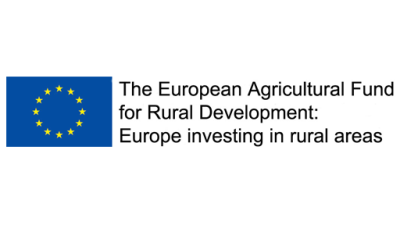Project
Kanalle lähitoukkaa
Project sponsors
The aim of
the project is to improve the self-sufficiency, resilience, and crisis
resilience of poultry and pig farms by developing a farm-scale, easily scalable
insect protein production process for feed manufacturing.
The need is
currently particularly high in organic production due to the cost and
difficulty of obtaining organic fishmeal and organic soy. The by-product of
insect production, called frass, is high-quality fertilizer, and its use
improves fertilizer self-sufficiency.
The
innovation of the project is a model for producing insect protein on the farm.
The black soldier fly (Hermetia illucens) was chosen as the production
insect based on its good production characteristics and disease resistance. The
model includes information on the equipment and methods for producing Hermetia
protein, as well as scalable calculation tools for preparing farm-specific
profitability calculations. The operational model developed in the project
strengthens the resilience and self-sufficiency of livestock production by
replacing imported protein – soy and fishmeal.
The project
is implemented by an European Innovation Partnership, coordinated by the
Natural Resources Institute Finland (Luke), with Jyväskylä University of
Applied Sciences (Jamk) and Kaisti Farm as sub-implementers.
The
project's published result is a method suitable for farm scale Hermetia
cultivation and insect protein processing, suitable technologies, processes,
quality control, facility and equipment investment planning, and scalable
calculation tools for cost and profitability assessment. The calculation tools
help evaluate under what conditions production would be economically viable as
situations and cost factors change. This is about securing the profitability of
production at the farm level - anticipation and preparation - resilience in the
face of rising production input prices.
For more information:
Henna Pitkänen, [email protected], p. +35850 340 7301
Pertti Marnila, [email protected], p. +35829 532 6355
Project results
During the fall of 2023, Jamk's insect farm piloted a black soldier fly larvae farming process suitable for farm-scale production. The chosen farming method was traditional box farming due to its reliability, cost-effectiveness, and general applicability. In the larvae feeding trials, the use of side streams from the screening of crops produced at Kaisti Farm was tested as feed for the larvae.
The feed mixtures included varieties of oats, barley, wheat, peas, and canola, which were tested in different blend ratios using the basic process. The goal of testing the mixtures was to ensure that all sorting side streams from the farm could be used as feed for the larvae. A mixture of Combi-Nasu pellets and wheat bran, which had performed excellently in previous studies, was used as a control.
To optimize the structure of the larvae's growth substrate, the grains were pre-treated by rolling and grinding to different degrees of coarseness. The structure of the growth substrate is crucial for the larvae's growth, preventing them from escaping, and ensuring the end product can be effectively sieved. The design of the feed mixtures also considered the rearing conditions: temperature, humidity, ventilation, and rearing density.
The results indicated that the side streams from crop sorting are suitable as feed for Hermetia larvae. The larvae grew on all tested feed mixtures. The pre-treatment of the varieties had a greater impact on the larvae's growth than the specific components of the feed mixture. The larvae could not process mixtures that were too coarse, while overly fine mixtures hardened at the bottom of the growth box. The structure of the feed mixture significantly affected not only the larvae's ability to utilize the feed but also the sievability of the larvae and frass.
Preliminary results from the pilot trials suggested that external conditions, such as air temperature or humidity, had less impact on larvae growth than previously thought. The larvae managed to thrive even at temperatures as low as 13°C without significant slowing of growth or increased escaping. This finding could be significant for the profitability of larvae production, as heating is one of the major cost factors in insect production in Finland's conditions.
The preliminary results from the pilot trials conducted in the 'Kanalle lähitoukkaa' project are promising. Based on the pilot trial results, farming black soldier fly larvae at a farm scale and under farm conditions is feasible, and the farm's crop side streams are suitable as feed for the larvae. Starting production requires local optimization of both conditions and the growth substrate recipe, but the farming process can be generalized for farms.
The main outcome of the project is an operational model suitable for farm-scale Hermetia rearing and insect protein processing. The operational model is currently being developed and will be published in Luke's publication series in spring 2025. The model includes information on equipment and methods for producing Hermetia protein, as well as generalized calculation tools for creating farm-specific profitability calculations. The calculation model will be available for download from the Rural Network in spring 2025. These tools will help assess the economic viability of production under changing conditions and cost factors. The goal is to ensure, anticipate, and prepare for the profitability of production at the farm level, enhancing resilience as input prices rise. The operational model can strengthen the operational reliability and self-sufficiency of livestock production by replacing imported protein sources such as soy and fishmeal. It promotes the circular economy by utilizing local side streams.
In marine ecosystems, the use of larval protein instead of fishmeal can reduce the entry of harmful substances like PFAS compounds into the food chain. Globally, overfishing and the degradation and collapse of marine ecosystems are major problems. Using wild fish as feed is not sensible if larval production can be developed to replace fish-based feed. According to the latest research in the field, larvae have proven to be excellent in promoting the welfare and health of both chickens and fish. Promising results have also been published regarding their effects on egg quality.
Updated 20.12.2024

